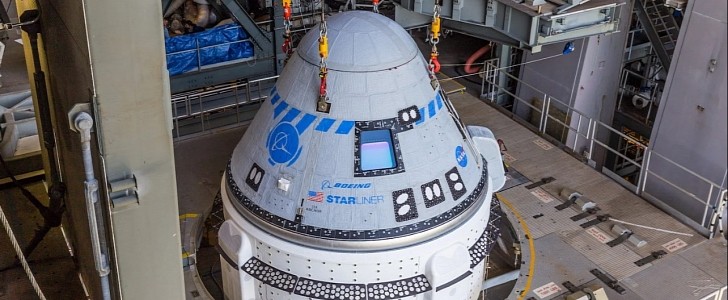NASA and Boeing are on track with the Orbital Flight Test-2 (OFT-2) mission to the International Space Station. On May 4, Boeing's Starliner spacecraft was hoisted atop an Atlas V rocket in preparation for its launch, which is set to take place later this month.
The mission suffered several issues over the years. During the first test flight, which occurred in December 2019, the uncrewed capsule encountered a software anomaly that prevented docking with the space station.
For its second attempt, which was supposed to take place last year in August, Starliner didn't manage to get past our skies due to an "unexpected valve position" in the propulsion system. Since then, the team has worked to solve the issue, and it's confident that this time, the spacecraft will be able to take off and reach the ISS as part of NASA's Commercial Crew Program.
The spacecraft left Boeing's Commercial Crew and Cargo Processing Facility at NASA's Kennedy Space Center on Thursday morning and arrived at ULA's Vertical Integration Facility (VIF) at Cape Canaveral Space Force Station to connect with the Atlas V rocket.
Once at VIF, Starliner was carefully lifted and placed atop the rocket that will take it to orbit. Now that the two vehicles are mated, the teams will do some more testing to guarantee they are correctly communicating with one another before the May 19 launch.
If everything goes accordingly, Atlas V will carry Starliner beyond our skies, helping it accelerate to 17,475 mph (28,125 kph). The spacecraft will get separated from the rocket after about 15 minutes after liftoff and will fire its engines, heading to the space station.
After a day, it will autonomously dock with the ISS and will spend between five and 10 days in space. Then it will head back home, where it will land in "one of five designated landing zones in the western United States." Once the mission is completed, Starliner will be ready to take its first American astronauts to the space station.
For its second attempt, which was supposed to take place last year in August, Starliner didn't manage to get past our skies due to an "unexpected valve position" in the propulsion system. Since then, the team has worked to solve the issue, and it's confident that this time, the spacecraft will be able to take off and reach the ISS as part of NASA's Commercial Crew Program.
The spacecraft left Boeing's Commercial Crew and Cargo Processing Facility at NASA's Kennedy Space Center on Thursday morning and arrived at ULA's Vertical Integration Facility (VIF) at Cape Canaveral Space Force Station to connect with the Atlas V rocket.
Once at VIF, Starliner was carefully lifted and placed atop the rocket that will take it to orbit. Now that the two vehicles are mated, the teams will do some more testing to guarantee they are correctly communicating with one another before the May 19 launch.
If everything goes accordingly, Atlas V will carry Starliner beyond our skies, helping it accelerate to 17,475 mph (28,125 kph). The spacecraft will get separated from the rocket after about 15 minutes after liftoff and will fire its engines, heading to the space station.
After a day, it will autonomously dock with the ISS and will spend between five and 10 days in space. Then it will head back home, where it will land in "one of five designated landing zones in the western United States." Once the mission is completed, Starliner will be ready to take its first American astronauts to the space station.
Join the journey as teammates rolled #Starliner out of our factory to @ulalaunch's Vertical Integration Facility. Starliner is stacked on the #AtlasV that will launch it on Orbital Flight Test-2 for @Commercial_Crew.
— Boeing Space (@BoeingSpace) May 4, 2022
Teams are excited for the world to see the launch on May 19. pic.twitter.com/I1Alqqkp9f







